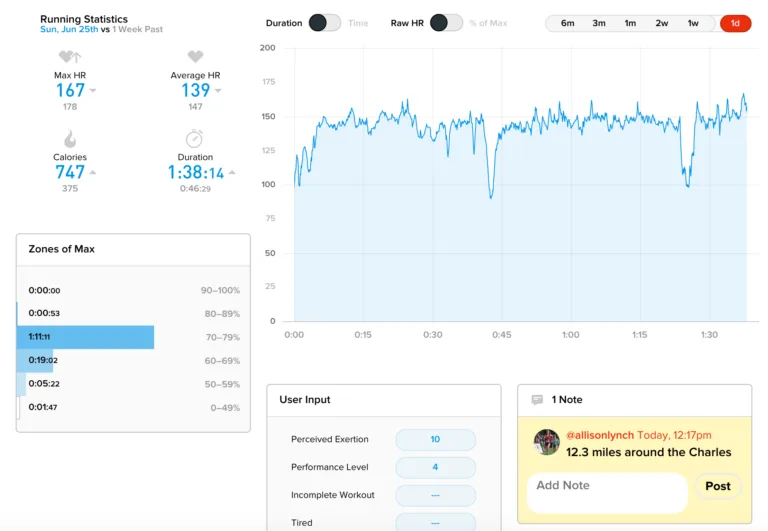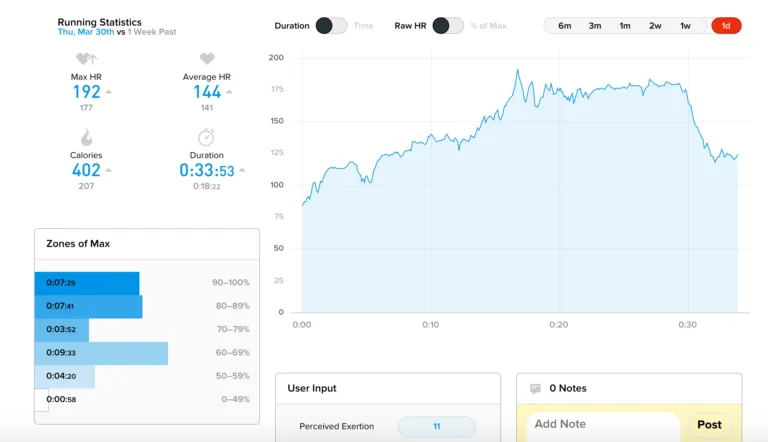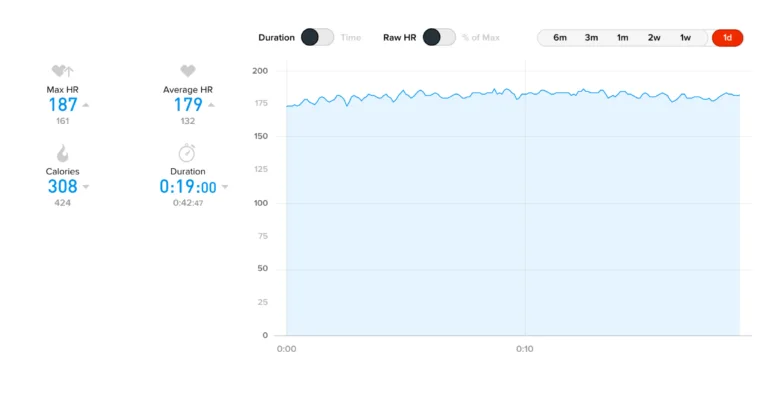Topics
- Article
- Running
Running Heart Rate Zones & 4 Essential Runs to Boost Endurance & Train Smarter

Not all runs are created equal. Or perhaps I should I say, not all runs are meant to be executed the same way.
I’ve been a runner since middle school, when I first discovered running by participating in my hometown’s track races each summer. Back then, I had no race strategy and I didn’t know what “peaking” meant. I didn’t wear a GPS watch and I didn’t know my pace. Today I’m a little wiser thanks to the coaches, doctors and physical therapists who have educated me on proper running form and helped me overcome various injuries and frustrating training plateaus. With 16 years of running experience under my belt, I’ve learned the hard way that success comes down to the numbers and the science behind the art of running, but not necessarily how I feel about my body. I’ve had days where I wake up and feel like garbage, but then I set a personal record in my race. Oftentimes, pre-race nerves and our own self-doubt cloud our ability to trust our fitness gains.
Running, Heart Rate & Training
If you’re looking to start running and boost your physical activity, WHOOP can be a great tool for monitoring effort (strain) and recovery–two things that runners can easily underestimate. With WHOOP, I can monitor the following:
- Time spent in specific heart rate training zones
- Daily nuances and long-term trends in heart rate variability and resting heart rate
- Time spent in REM and Deep Sleep (crucial sleep stages that aid in recovery)
- Day-to-day recovery before and after tough workouts
Depending on what kind of run I’m doing, my heart rate monitor data is going to look very different. WHOOP takes a lot of heavy lifting off my plate. I use the data to reassure that I’m doing the right things, and to incorporate additional days of rest if I notice my body isn’t recovering properly.
4 Heart rate zones for running
The following four runs are crucial to any competitive runner’s training plan, and should be monitored appropriately to avoid overtraining and maximize fitness goals (for beginners, I also highly recommend hiring a coach and joining a local club for support and running resources).
1. The Long Run (Heart Rate Zone: 70% of Max)
Training Zone: Aerobic My Pace: 7:30-8:00/mile The Workout: 12 miles at recovery pace Often coined as the “Church of the Sunday Long Run,” running longer distances on Sundays is a quintessential part of the running culture. It’s a perfect way to cap off a tough week of training and spend time alone on the roads thinking about everything from existential life questions to what kind of donuts you want for brunch. The long run is a sacred time of reflection. Your long runs should be approximately 25% of your total weekly mileage. For instance, I run 45-50 miles per week. My long runs are generally 11-13 miles. During these runs, I should feel relaxed and able to hold a light conversation. These runs build your endurance, allowing you to sustain aerobic movement for extended periods of time. Mentally, they teach you how to be patient and how to settle into a smooth, relaxed (but not sluggish) pace. What Target Heart Rate is Too High? In the chart below, my long run lasted about 90 minutes and my heart rate averaged 139 beats per minute. It felt comfortable without feeling lazy. My WHOOP data shows which zones my heart rate fluctuated between, and gives me reassurance that I wasn’t pushing my body harder than I needed to be (I stopped twice to stretch and grab water, hence the dip in HR). Some people may feel comfortable at different paces or heart rates, so it is important to pay attention to cardiovascular effort relative to your max (here's more on how to calculate your maximum heart rate).

Heart rate data from a long run, via the WHOOP web app.
2. Speed Intervals (Heart Rate Zone: 95-100%)
Training Zone: VO2 Max My Pace: 4:00-6:00/mile (depending on length of interval) The Workout*: 2 minutes rest between each interval, 5 minutes rest between sets 4x mile repeats: 6:01, 5:58, 5:55, 5:59 4x 400m: 75s, 74s, 73s, 75s *Note: volume and pace will depend on what you are training for. This workout was in preparation for a 5k.

Speed intervals are an important part of training because they tap into your max aerobic capacity, allowing you to improve your VO2 fitness level and train your legs to have faster turnover. These types of workouts are where you feel “the burn” associated with lactate buildup and short rest. Typically, your body can only handle 1-2 workouts like this a week. For me, I can only do one as it takes me 3-4 days to fully recover before I can put that much stress on my body again. Above is a screenshot of the data, and the various peaks represent each interval. What are the Aerobic and Anaerobic Heart Rate Zones?
3. The Progressive Run (Heart Rate Zone: 85-88%)
Training Zone: Lactate Threshold My Pace: 6:30-6:10/mile The Workout: 4-mile tempo starting at 6:30/mile, cutting down to 6:10/mile The goal for this workout is to stay in a hard, but comfortable zone without feeling totally gassed at the end (the way speed intervals often feel). Physiologically, you are running at your max threshold before your body starts generating more lactic acid than it can handle to reconvert back into energy. Here, my heart rate is usually around 160-170 bpm. These runs are the trickiest, because it’s easy to want to go faster because you know you can, but that’s not the point. Going faster than needed during your tempo runs will ultimately detract from your training, because you’re not learning how to maintain composure in a threshold state, and you are increasing recovery time needed. For these runs, I start out at a comfortable pace around 6:30-6:40/mile, and pick it up to about 6:20/mile towards the end. 12 Running Recovery Tips from Emma Kirk-Odunubi

A progressive run during which heart rate elevates toward the end.
This is not my race pace, so it shouldn’t feel like I’m racing. Again, I can’t rely entirely on feel, so it’s good to check my heart rate and WHOOP strain to make sure I’m in the right zone. My WHOOP data captures my HR data as I warm up, and then you can see it increase to the 160s as I increase my pace.
4. Race Day (Heart Rate Zone: 90-95%)
Training Zone: VO2 Max My Pace: 5:45-5:55/mile The Race: Local 5k Time: 18:24 Pace: 5:55/mile

Elevated heart rate close to max while running a race.
Race day is a day you either dread, or can’t wait for. If you’ve done the work, there’s nothing to fear. The sample of data below is from a 5k I ran in Boston. According to my HR data, I probably could have pushed a little harder to average a few beats higher per minute, but effort-wise I remember the race felt good and was a solid start to the cross-country season. The biggest mistake you can make as a runner is to treat all your runs equally. If you go the same pace for each run, you’re not going to get faster. If you’re constantly exacerbating your heart rate and staying in elevated training zones, you’re going to burn out. By monitoring your runs day by day, specifically your heart rate and your recovery (WHOOP calculates resting heart rate, heart rate variability, and quality of sleep and factors this into an overall Recovery score), it’s much easier to stay on par with your training, and to know when your body needs to rest. Learn More: How to Recover After a Marathon or Long Run Allison Lynch is a member of the Boston North Track Club, a competitive USATF New England sprint and mid-distance group that competes regionally and nationally. She has competed in distances including the marathon, half-marathon, 5k, mile, and 800m.